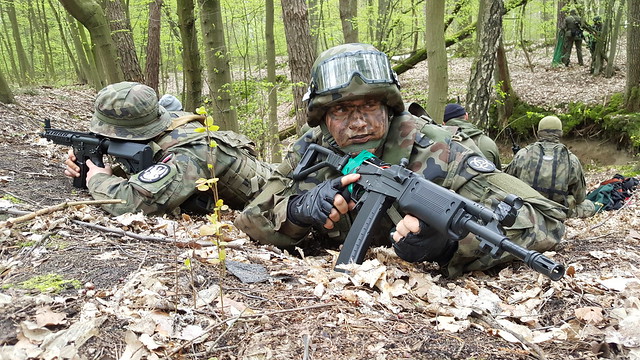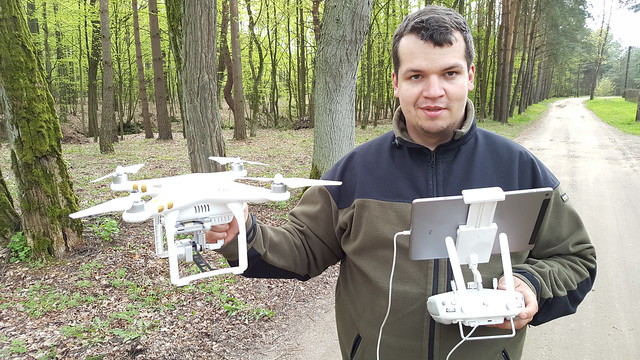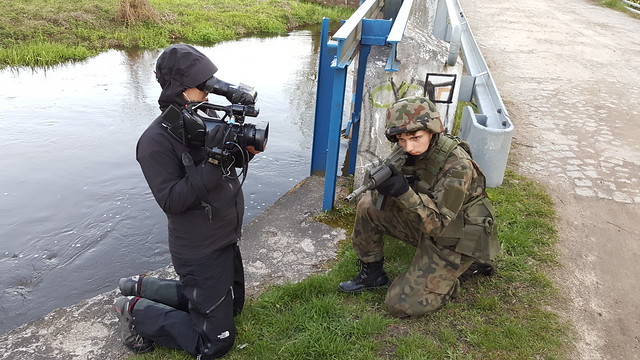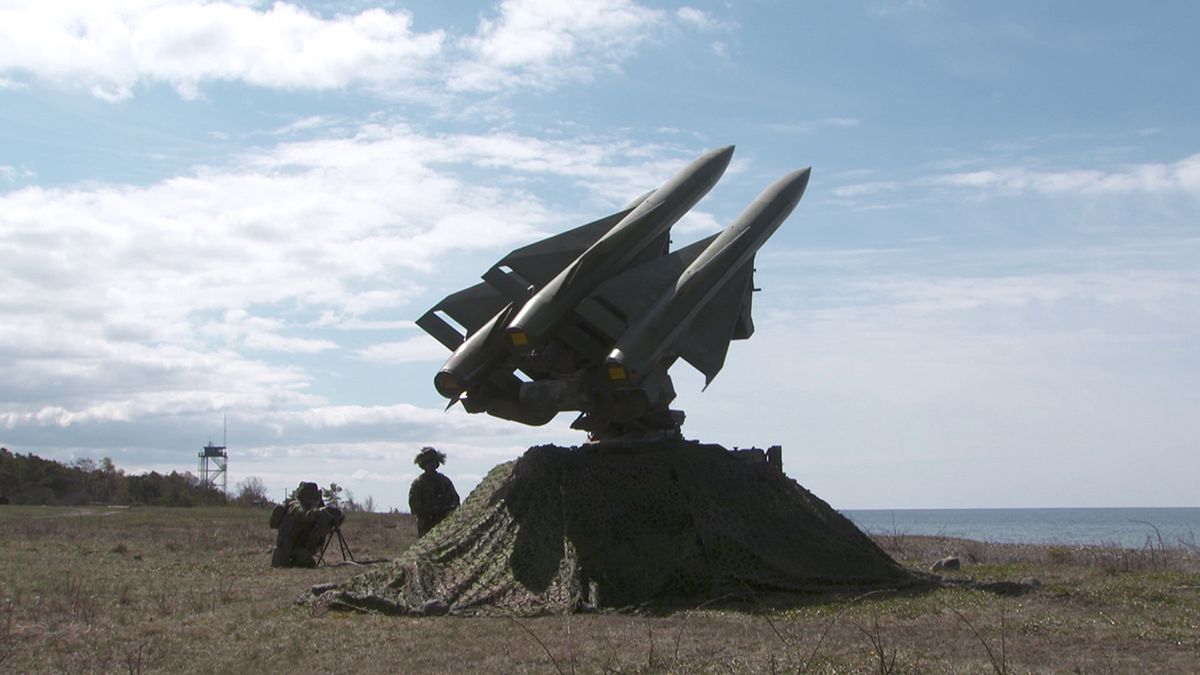The Insiders team takes an in-depth look at European defence and security in the face of cyber warfare, Russian interventionism and Donald Trump's luke warm support of NATO.
Divisions of Poland’s new defence strategy
Since Russia’s annexation of Crimea and the subsequent fighting in Eastern Ukraine, neighbouring nations has become nervous.
Whether these fears are grounded in reality or not, the fact is that several countries have increased their military spending, reinstated conscription, and regularly train with NATO forces. US President Trump’s failure to endorse NATO’s mutual defense pledge at the organisation’s summit last week did little to quell anxiety.
Take the case of Poland, one of four EU countries which comfortably meets NATO’s target of 2% of GDP spent on defense. Along with Estonia, Lithuania and Latvia, Poland has recently seen the deployment of NATO troops on its soil. But the country has gone a step further, since Russia’s annexation of Crimea. Poland not only tolerates the multiplication of para-military units training to counter potential threats from Russia, it is also building up a new army of volunteers which should consist of 53,000 men and women by 2023.
Euronews caught up with a para-military unit near Warsaw.
Polish preparations
Eighteen-year-old Michal Kurzawa is fan of rugby, the Harry Potter novels and comic books.
But he is also one of a rising number of young people in Poland who’s joined a private paramilitary organisation, concerned about the threats facing his country.
Since Russia’s annexation of Crimea and the subsequent fighting in Eastern Ukraine, neighbouring Poland has become nervous.
It’s led tens of thousands of men and women to join Polish self-defence units. The unofficial units operate legally, using only fake weapons during their outdoor training.
The teenager who lives in a small town around 80 kms away from the Polish capital of Warsaw, is preparing his replica gun for another weekend of training with The Shooters.
 Michal said his favourite piece of equipment is his bulletproof vest from the US Navy Seals.
Michal said his favourite piece of equipment is his bulletproof vest from the US Navy Seals.
“That’s my equipment”
Asked about the right to own arms in Poland, he said: “I think there should be easier access to arms in Poland because there are threats to our country coming from the eastern borders and also from third world countries.
“When it comes to shooting practice I believe everybody should get better access to the shooting ranges. There should be a shooting range in each town so that the population can be better prepared.”
In response to the changing geopolitical threat, the Polish government has begun building up a new voluntary army. The Territorial Defence Force has been set up to serve the local community and support Poland’s Army. By 2023, the civilian part-time force should consist of 53,000 volunteers.
But in Poland a debate is ongoing about what kind of arms the new volunteer force should have and will they really boost Poland’s defence.
The populist right-wing government wants to integrate those like Michal and his friends into the new Territorial Defence Force.
But they’ve come up against some resistance.
 Michal instead dreams of becoming a battlefield surgeon in Poland’s professional army.
Michal instead dreams of becoming a battlefield surgeon in Poland’s professional army.
He’s skeptical about the purpose of the new project and whether it could be used to combat dissent among the Polish population.
He said: “By creating this Territorial Defence Force the Polish Defense Minister Macierewicz is building up his own private army.
“Look at the National Guard in the USA, which can be used to clamp down on its own people. I don’t like this concept.”
Sources have told Euronews that the government’s new force is likely to be equipped with rifles, as well as anti-tank-rockets and drones.
The force could ultimately be used in armed conflict but it’s unclear what impact they could have.
But it is questionable how realistic the threat of an attack from Russia is. There is no Russian minority or Russian affiliated groups in Poland.
The commander of the Shooters unit is a former soldier with international battlefield experience.
Zbiegniew Antolak-Gaczynski was asked three times by the Defense Ministry to take charge of part of the government’s new force but declined.
 He said: “I don’t know precisely what the defence minister is planning but looking at the text of the new law, by reading those regulations, it becomes clear that this Territorial Defence Force might not be used just in the way that was officially announced.”
He said: “I don’t know precisely what the defence minister is planning but looking at the text of the new law, by reading those regulations, it becomes clear that this Territorial Defence Force might not be used just in the way that was officially announced.”
But spokesman for the force Marek Pietrzak rejected the claims.
Speaking from its headquarters, he said: “There is no risk that the force will be used against the citizens of Poland.
“Its creation is an answer to the changing geopolitical situation, especially in Central and Eastern Europe.
“We are not the only ones with such a force.
“The first countries having introduced such a concept were Switzerland and the Scandinavian countries.
“But also in central and eastern Europe several countries created such a force, such as the Baltic States, Romania and Bulgaria.”
The former defence minister from Poland’s opposition party called the new forced a “partisan army”.
A waste of money that would be better spent boosting Poland’s cyber-defence or modernizing military equipment such as helicopters.
Tomasz Siemoniak from the Civic Platform party said: “Another argument is that they will be a kind of weekend soldier, you know, with weekend training.
“Instead I believe extra training should be given to the professional army, to update their skills and capabilities.
“Former soldiers can also be a real help and support to the regular army, not those kind of weekend-soldiers, it’s fiction.”
A political analyst close to the liberal opposition believes building up a civilian part-time army will win the ruling party more votes, but doesn’t make the country any safer.
Slawomir Sierakowski said: “If you have 50 000 people in your new force, for the Minister of Defence it means 50,000 voters plus families.”
Gotland: Western sentinel in the Baltic sea
At first glance, Sweden seems far enough from Russia not to have to worry…were it not for the enclave of Kaliningrad right across the Baltic Sea where Russia has deployed nuclear capable missiles.
While both countries publicly and strongly dismiss the possibility of a Russian intervention, Sweden has nonetheless reinstated conscription, increased its military spending and strengthened ties with NATO.
Euronews’ Valerie Gauriat traveled to Gotland, a large Swedish Island that lies about 340 km across from Kaliningrad and will soon see the return of troops after years of demilitarization.
Gotland, with its population of just 57,000, is located in the middle of the Baltic Sea, east of the Swedish mainland, across from Latvia. The top-ranked tourist destination’s remilitarisation shows the level of concern over Russian resurgence in the Baltic Sea.
Euronews followed soldiers of the 61st air defense battalion of the Swedish army as they carried out a military exercise on the island, the country’s largest. Soon, a permanent force of some 300 soldiers will be stationed there.
“The reason for that is the unstable situation within the Baltics. We see more military exercises in the Baltic region,” says Commander Matthias Ardin.
Sweden, which has a history of neutrality and is not a member of NATO, has been ramping up its military capability since Russia annexed Crimea in 2014 and began carrying out military exercises in the Baltic Sea.
A Russian military intervention in Gotland is considered highly unlikely and Moscow has dismissed the idea as ludicrous. But Russia has deployed nuclear-capable Iskander missiles in Kaliningrad, so the Swedes are on their guard.
Russian Iskander-M tactical ballistic missiles based
in Kaliningrad can reach Sweden's Gotland https://t.co/U0jMIvYLe7— Jacek Saryusz-Wolski (@JSaryuszWolski) October 9, 2016
Sweden recently strengthened ties with NATO, striking a controversial host nation support agreement that would allow Atlantic Alliance troops to deploy troops across Swedish territory, airspace and waters in times of crisis or war.
Fears of a resurgent Russia have even made joining the Alliance a major debate topic in the country in recent months. Latvia in particular has urged both Sweden and Finland to join NATO to reduce the Baltic states’ vulnerability to any potential Russian agression.
But Moscow has threatened to take new military measures of its own if the Scandinavian countries went ahead and joined the Alliance.
Swedes are divided on whether Sweden should become a #NATO member https://t.co/wsCdO4rrBZpic.twitter.com/t5PrGLAMII
— Pew Research Center (@pewresearch) May 24, 2017
From tourist attraction to military training ground
In September, Gotland will be at the heart of a major military exercise involving some 20,000 Swedish soldiers, plus troops from the United States, France, Norway, Denmark and Estonia. At the same time, Russia is set to hold its own military exercise in Belarus and in Kaliningrad – with 100,000 troops.
Gotland played a key role in Swedish defense during the Cold War, but the island was demilitarised in 2005.
Tourists now come here for the medieval walls and towers of Visby, Gotland’s only town and a UNESCO World Heritage site.
The Lonely Planet travel guide has in fact featured it on its hotlist of European places to visit this year.
Tracing history in #Visby, #Gotland – no. 2 in our #BestinEurope list for 2017! https://t.co/zsLbn1znNZ by
LolaAkinmade</a> <a href="https://twitter.com/hashtag/lp?src=hash">#lp</a> <a href="https://twitter.com/hashtag/travel?src=hash">#travel</a> <a href="https://t.co/noUEoRerQI">pic.twitter.com/noUEoRerQI</a></p>— Lonely Planet (lonelyplanet) May 24, 2017
The most 'Instagram-able' spots of Gotland: Europe's (second) best place https://t.co/hTGiHbVegspic.twitter.com/PPWQDszjlX
— The Local Sweden (@TheLocalSweden) May 24, 2017
Locals are not particularly worried to see troops return.
“It’s good that they rebuild the military capacity here on the island. Not that I think there’s an imminent threat from Russia in particular. I don’t think it will happen, because I don’t really see a reason. But maybe something happens somewhere else in the world that has a snowball effect and maybe it can affect us,” said resident Egil Falke.
“When you decide to have more military presence, maybe then something else can happen,” said another local, Anne Scheffer Leander. “When you escalate, then someone will respond. So maybe things will change. But I wouldn’t say I’m afraid at this point.”
Free up those bunkers
The Swedish government has asked all municipalities to set up civil defense plans. It has also launched a nationwide awareness campaign.
Christer Stolz oversees contingency planning in Gotland. He and his team work to prepare the population for any type of crisis, including a military one. That includes drawing up lists of things to have at home in case of an emergency – such as warm clothes, matches, candles, a water container, something to cook with and canned goods to last for at least three days.
“There are different types of scenarios. It could be a power outage or anything that might cause a big disruption for society. Here, we’re on an island. So we depend on transportation; and if transport is suspended, we must be able to cope for three days or more,” said Stolz.
The government has also launched a national rehabilitation programme for the nuclear fallout shelters built during the Cold War. Sweden has 65,000 shelters nationwide – the highest per capita rate in the world.
In Gotland, Andre Samuelson checks on the state of the 350 shelters listed across the island – to assess whether they could be used again in case of an emergency. Many are currently used as storage space by the local population.
Samuelson said residents should be able to easily clear out all the clutter to have the shelters ready for use within 48 hours.
#Sweden preparing hundreds of nuclear bunkers amid fears of #Russian attack https://t.co/PSmrOsX9dP via
Independent</a></p>— Ari Laaksonen (LaaksonenAri) March 24, 2017
Conscription makes a comeback
The scenario of a military crisis was a fairly abstract concern for the Visby high school students we met at their athletics club. Yet they said they were reassured to have permanent troops return to the island.
They also see Sweden’s gradual reintroduction of compulsory military service as a wise move in a worrisome world.
“Before, it was felt like everything was very distant and far away. But recently we had a terror attack in Stockholm, and after that, we got a little bit shaken up, and we started to think more about it,” said student Johan Burvall.
Conscription was abolished in 2010, but the Swedish government said in March it would be reintroduced starting next year, and 4,000 men and women would be drafted into the defence forces.
“We can’t just sit and wait for something to happen,” said student Tristan Cales. “It’s a good choice to join the military and try to help the country as much as you can.”
#Sweden brings back military conscription in response to #Russia's #Baltic military drills #Gotlandhttps://t.co/aAGJLc7ecLpic.twitter.com/Ejvuqsu1pN
— F. Manfredi Firmian (@fmfirmian) March 2, 2017
European defence: Russia, the USA and cyber warfare
Sophie Claudet met European defence expert Sven Biscop in the studio to discuss threats to European interests, explores what the future might hold for old alliances and what this means for our defence policies.
Euronews – Sophie Claudet
Are fears of Russian expansionism justified in your mind?
Expert on European Defence Policy – Sven Biscop
I don’t think we should overstate this. Look, the 28 members of the EU alone have 1.5 million people in uniform. That’s twice the size of the Russian Armed Forces. Now that’s not one and a half million combat-ready-troops but neither are the 750,000 Russians so I don’t think that we are militarily threatened.
Sophie Claudet
Now how about cyber war? We know that Russia has been accused, allegedly, of interfering in elections for example. Do you think NATO countries should better prepare themselves to fight this cyber threat?
Sven Biscop
This is something that all of the states of Europe have to tackle, quite simply by convincing their publics that there is nothing in the Russian narrative that could be more attractive than what they could get from their own state and from being in the European Union. And then whatever stories the Russians try to spread on the internet, fake news etc…. it just wont be listened to because it wont be a viable alternative to what people already have as members of the EU.
Sophie Claudet
Do you think Russia has the means, you know, the technology to target and hack into European military systems for example?
Sven Biscop
These are, I think, very cheap and very widespread technologies and that is one of the problems. The list of potential targets is unlimited. It’s critical infrastructure and most of it is actually in private hands so it’s very easy to create a lot of nuisance. On the other hand we should also ask ourselves what are the Russian interests and intentions. It’s not because someone has the capacity to do something that it is likely that he will do it.
Sophie Claudet
What are Russia’s intentions in your mind?
Sven Biscop
My feeling is that Russia’s core objective is to restore its sphere of influence in the former countries of the Soviet Union. It does not have an agenda against the European Union as such. It just wants to weaken the European Union and NATO so it can have a free hand in countries like Ukraine. So I do not see a direct threat to the EU but of course if we in Europe or in NATO would divide ourselves then the Russians, opportunistic as they are, would probably not hesitate to jump into the void that we leave.
Sophie Claudet
We saw last week that Mr Trump failed to clearly endorse NATO’s mutual defence pledge.
Sven Biscop
This goes much beyond Trump for two reasons… One there is a new elite now in the United States which is not necessarily of European origin and which does not necessarily look first to Europe. Many American policymakers these days look first to China and Asia.
Secondly, we are no longer in the cold war where European and American interests coincided almost automatically. We’re in a multi-polar world there are different great powers, they cooperate on one topic, they compete on another and so our interests are not necessarily the same as those of the Americans. Just look at the way the US looks at China in a very different way from Europe. That doesn’t mean that we can’t maintain a strong alliance but it means we have to be more flexible and that we Europeans have to define for ourselves what are our interests and what are our priorities and then act upon them, if necessary by ourselves.
Sophie Claudet
Does it mean that European defence is finally going to shape-up and how?
Sven Biscop
It should finally shape-up because we’ve been talking about it for twenty years. If it happens now it will be the result of a Franco-German access in defense. France and Germany together can activate permanent structures of cooperation, the mechanism in the Lisbon treaty that allows a core group of member states to integrate their defense efforts, take a big leap forward and really create the capabilities that allow Europe to handle a crisis autonomously if that is necessary.


